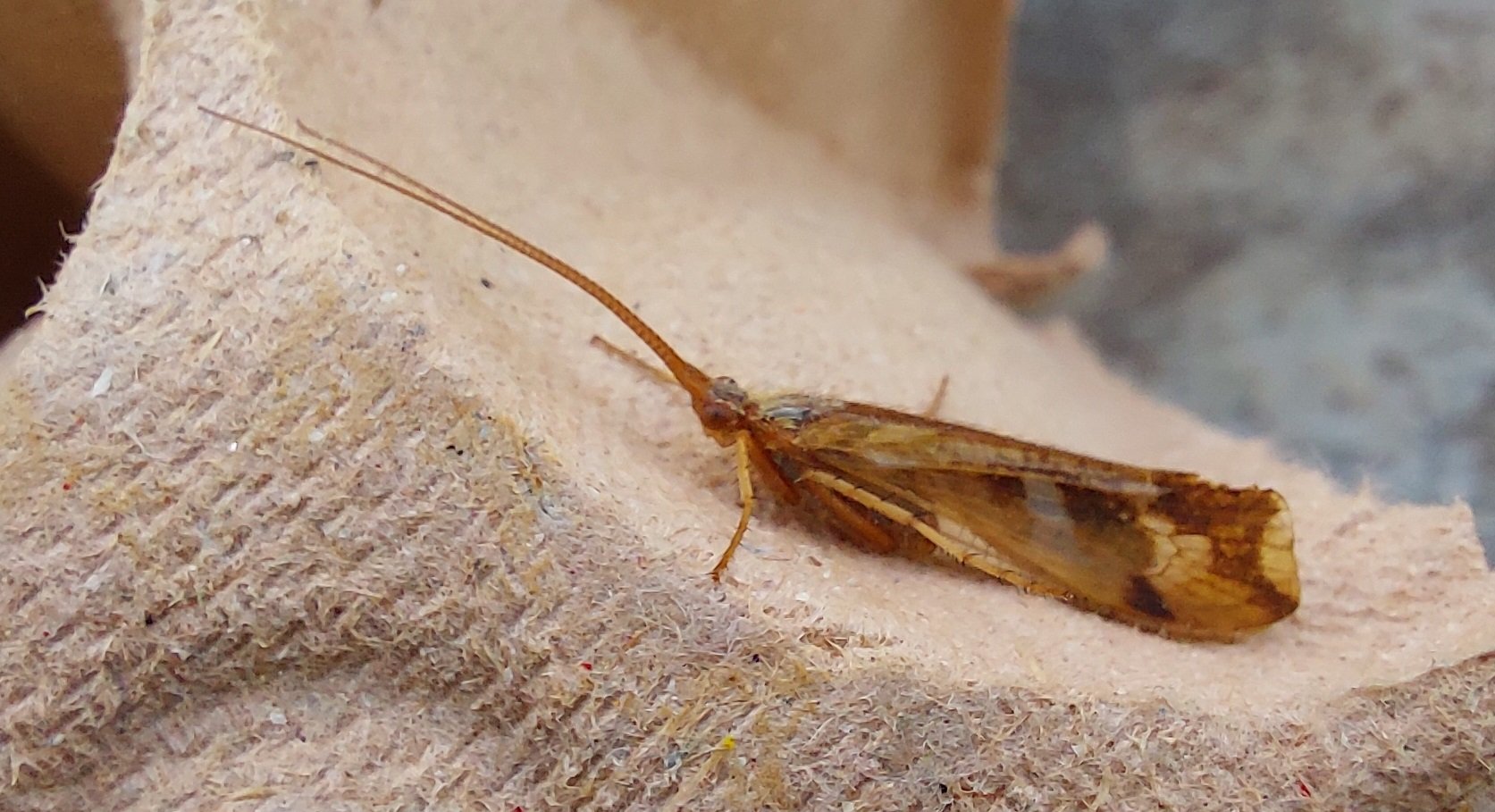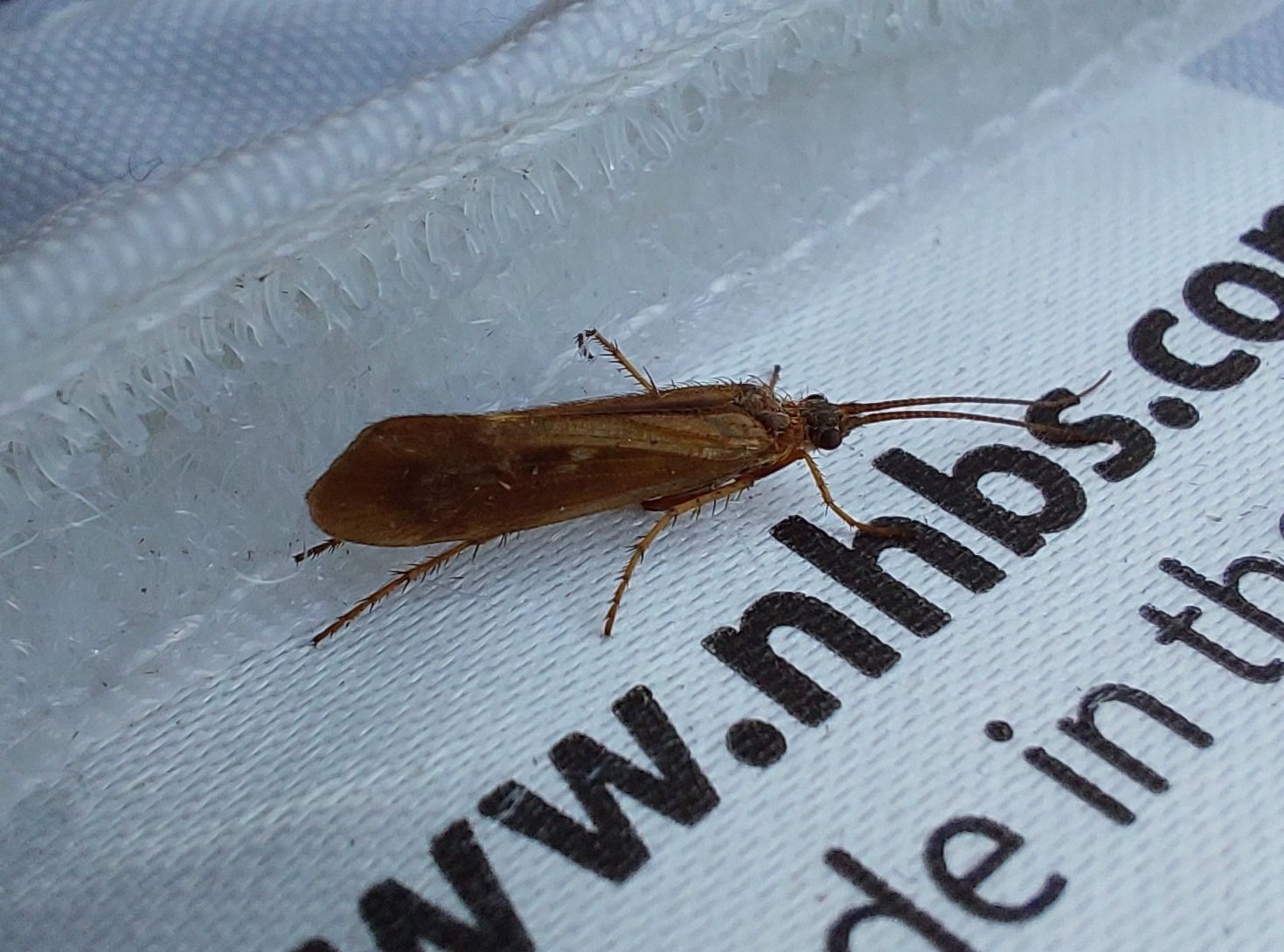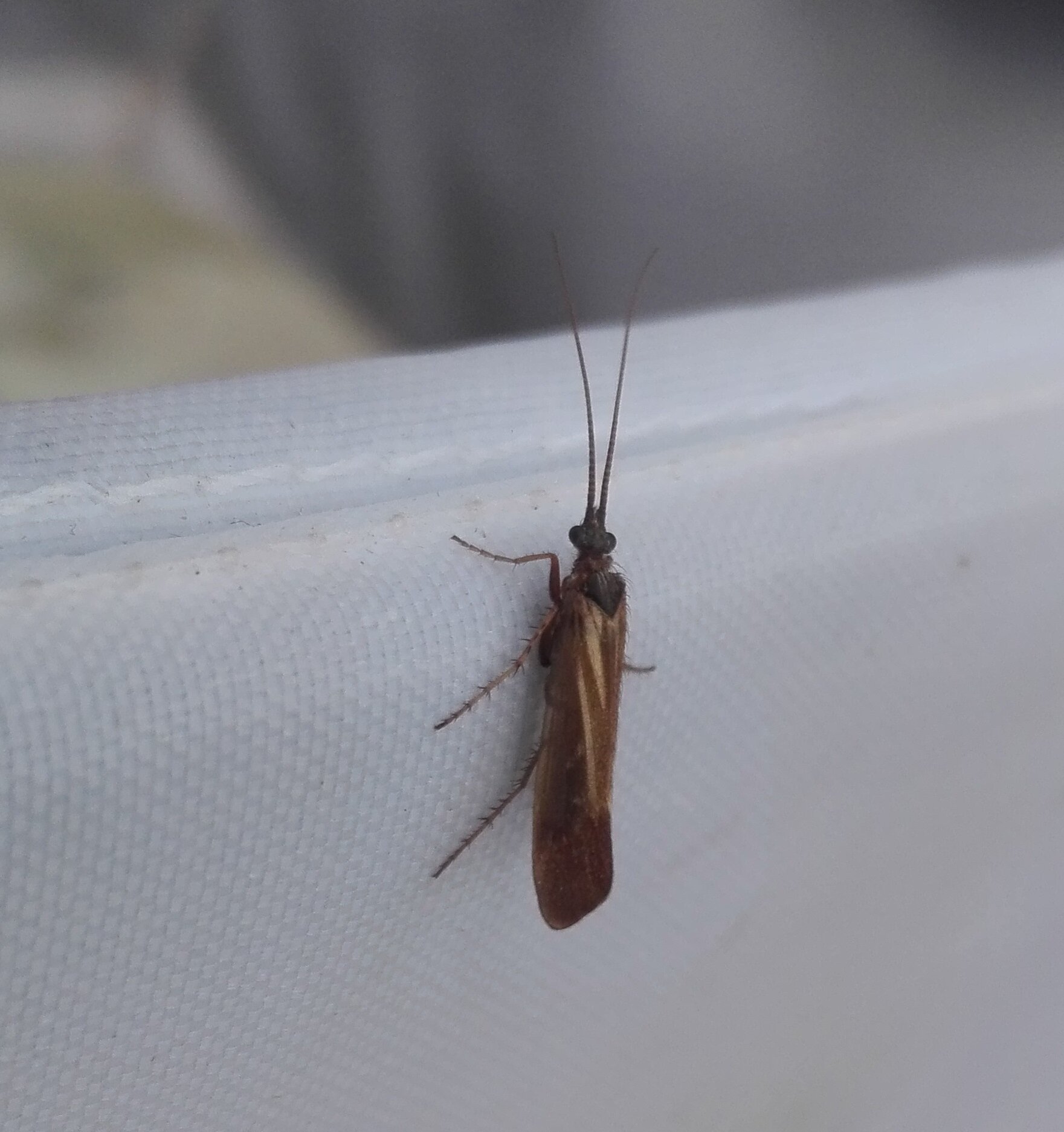Limnephilus Caddisflies
/A couple of caddisflies in the moth trap at the weekend. On the left Limnephilus lunatus is the most frequently caught large caddisfly, named after the crescent moon-shaped pale mark at the tip of its wing. Smaller and less marked, Limnephilus auricula (#968) is a new species for the list. It frequents water edges that dry out in summer, the adults laying eggs in the autumn and the larvae overwintering.





